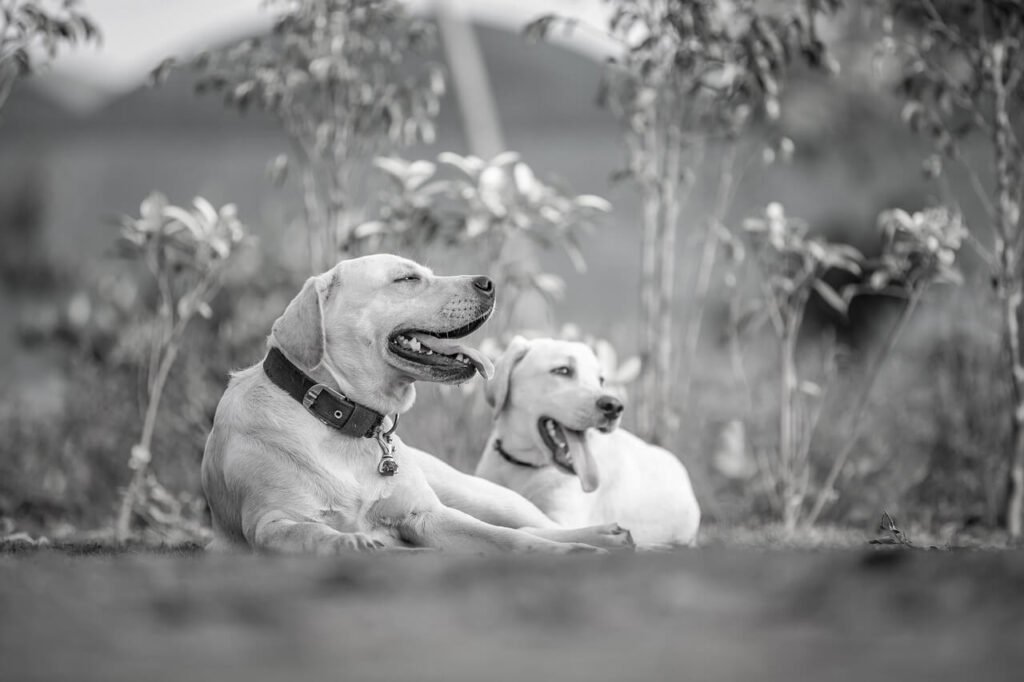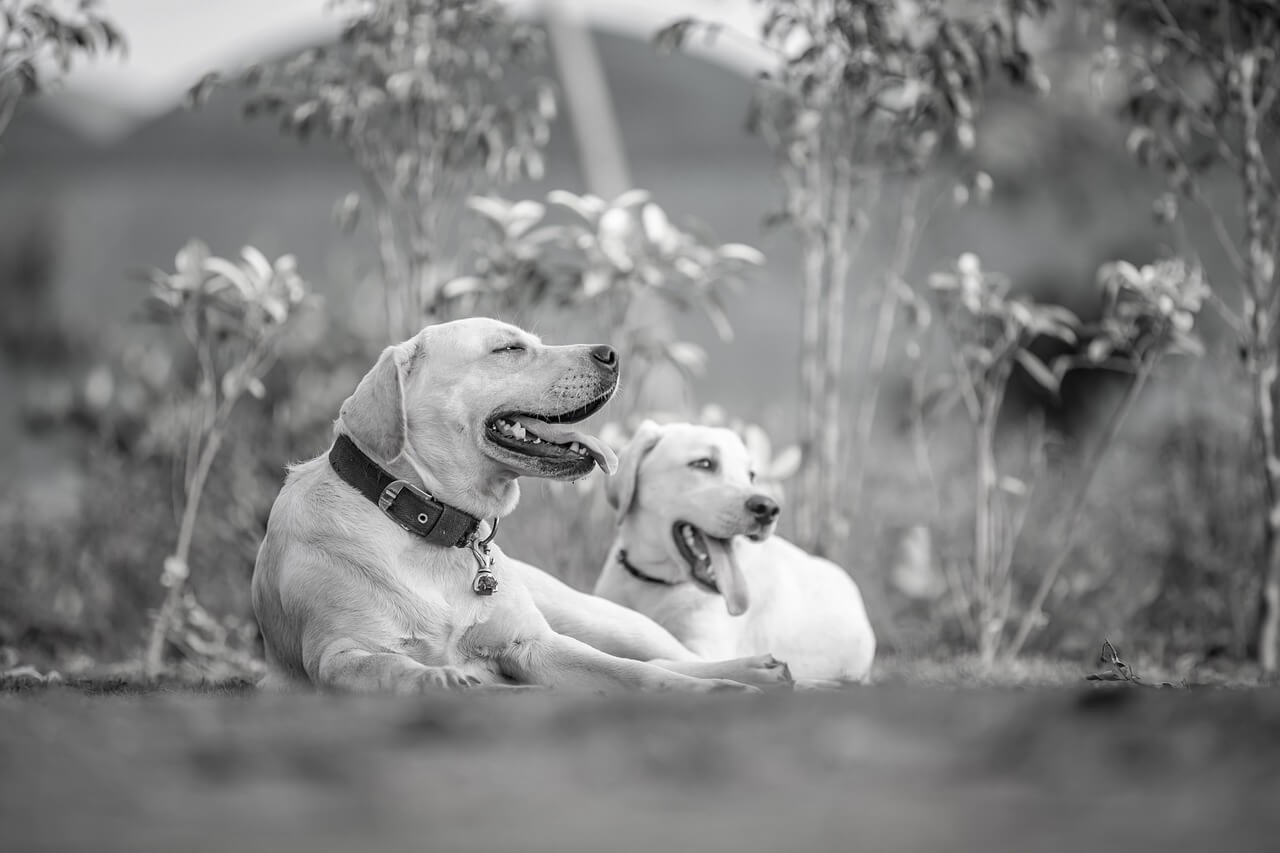Why Is My Dog Laughing? Decoding Your Pup’s Playful Behavior
Dogs are known for their expressive and sometimes quirky behaviors, but one of the most intriguing is when they appear to “laugh.” If you’ve ever noticed your dog panting in a way that resembles a grin or making sounds that seem almost like chuckles, you might wonder if they’re actually laughing. While dogs don’t laugh in the human sense, certain behaviors mimic laughter and often indicate happiness, playfulness, or excitement. Understanding these behaviors can deepen your bond with your furry friend and provide insight into their emotional world. Let’s explore what it means when your dog seems to be laughing and how you can interpret this unique form of communication.
What Does “Dog Laughing” Look Like?
When we say a dog is “laughing,” we’re referring to specific physical and vocal cues that resemble joy or amusement. These behaviors are subtle but easy to spot once you know what to look for.
Playful Panting:
Dogs often pant with an open mouth and relaxed expression during moments of happiness or excitement, which can look like a wide grin.High-Pitched Vocalizations:
Some dogs emit soft, breathy sounds while playing or interacting with their humans, resembling laughter to our ears.Relaxed Body Language:
A wagging tail, loose posture, and bouncy movements often accompany a dog’s “laugh,” signaling they’re feeling playful and content.Tooth Chattering or Lip Smacking:
Certain breeds may chatter their teeth or smack their lips as part of their playful vocal repertoire.Eye Contact and Engagement:
Laughing dogs typically seek attention from their owners, using eye contact and animated gestures to invite interaction.
These signs show that your dog isn’t just expressing random noises—they’re actively engaging with you in a joyful, lighthearted way.

Why Do Dogs Exhibit Laugh-Like Behaviors?
Understanding why dogs display behaviors that resemble laughter helps us appreciate their emotional intelligence and social nature. Here are some common reasons behind these actions.
Expressing Joy and Excitement:
Dogs use laugh-like behaviors to communicate happiness, especially during playtime or after greeting their favorite person.Seeking Attention or Interaction:
When your dog “laughs,” they may be trying to initiate games, cuddles, or other forms of engagement with you.Mimicking Social Cues:
Dogs are highly attuned to human emotions and may mimic laughter as a form of bonding or mirroring behavior.Responding to Positive Stimuli:
Toys, treats, or fun activities can trigger laugh-like responses as a natural reaction to pleasure.Releasing Excess Energy:
High-energy dogs may express themselves through playful vocalizations and body language as a way to burn off steam.
These motivations highlight the importance of laughter-like behaviors in strengthening the connection between dogs and their owners.
Check this guide 👉Why Dogs Kick Their Back Legs: Best 7 Expert Tips!
Check this guide 👉Understanding Why Dogs Show Their Teeth: Best 7 Expert Tips!
Check this guide 👉Why Do Dog Eyes Move While Sleeping? Best 7 Expert Tips!
Signs Your Dog Is Happy (“Laughing”) | How to Respond to Their Behavior |
|---|---|
Playful panting and grinning | Engage in interactive play or fetch |
Soft, high-pitched vocalizations | Offer praise or affection to reinforce joy |
Relaxed body language and tail wagging | Provide calming reassurance |
Tooth chattering or lip smacking | Observe closely for underlying excitement |
Seeking eye contact and closeness | Spend quality time together |
How to Encourage Positive Laugh-Like Behaviors
If you want to encourage your dog’s playful expressions and strengthen your relationship, there are several ways to nurture their joyful side.
Incorporate Regular Playtime:
Schedule daily play sessions with toys or games to keep your dog mentally stimulated and physically active.Use Positive Reinforcement:
Reward your dog with treats, praise, or affection whenever they exhibit laugh-like behaviors to reinforce the habit.Create a Fun Environment:
Set up spaces in your home where your dog feels free to romp, explore, and express themselves without restriction.Introduce New Experiences:
Take your dog on walks, hikes, or visits to new places to spark curiosity and excitement.Practice Calming Techniques:
Balance high-energy moments with relaxation exercises to prevent overstimulation and maintain harmony.
By fostering a supportive environment, you can help your dog thrive emotionally and physically.
Misinterpretations of Laugh-Like Behaviors
While laugh-like behaviors are usually positive, they can sometimes be misunderstood. Recognizing potential misinterpretations ensures you respond appropriately to your dog’s needs.
Confusing Excitement with Anxiety:
Rapid panting or pacing might indicate stress rather than happiness. Assess the context carefully before reacting.Overlooking Health Issues:
Persistent tooth chattering could signal dental pain or neurological problems requiring veterinary attention.Assuming All Vocalizations Are Playful:
Growls or whines paired with tense body language may indicate discomfort or aggression, not laughter.Ignoring Environmental Triggers:
Loud noises or unfamiliar settings can cause exaggerated reactions that aren’t truly playful.Misreading Subtle Signals:
Not all dogs display obvious laugh-like behaviors; quieter dogs may still feel joyful despite minimal outward signs.
Paying attention to these nuances helps ensure accurate interpretations of your dog’s emotions.
The Science Behind Dog Laughter
Research has shed light on the fascinating phenomenon of dog laughter, offering insights into its origins and significance. Here’s what scientists have discovered about this endearing behavior.
Discovery of Canine “Laughter”:
Studies show that dogs produce specific breathy sounds during play, which researchers call canine laughter.Impact on Stress Levels:
Playing recordings of dog laughter has been shown to reduce stress and calm shelter dogs.Evolutionary Purpose:
Laugh-like behaviors likely evolved as a way for dogs to communicate safety and invite social interaction.Similarities to Human Laughter:
Both human and dog laughter serve as social signals, promoting group cohesion and shared enjoyment.Role of Domestication:
Living alongside humans has amplified dogs’ ability to express emotions in relatable ways, including laughter-like behaviors.
This scientific perspective highlights the depth of dogs’ emotional lives and their capacity for connection.
How Different Breeds Express Laughter
Not all dogs express joy in the same way, and breed-specific traits can influence how laughter-like behaviors manifest.
Herding Breeds (e.g., Border Collies):
Known for their energetic personalities, herding breeds often combine laughter-like vocalizations with bouncy movements.Hound Breeds (e.g., Beagles):
Hounds tend to bay or howl in addition to panting, creating unique sound combinations that resemble laughter.Toy Breeds (e.g., Chihuahuas):
Smaller dogs may squeak or chirp excitedly, adding a playful twist to their laugh-like expressions.Working Breeds (e.g., German Shepherds):
These breeds often display subtle laughter through focused eye contact and gentle nudges.Mixed-Breed Dogs:
Mixed-breed dogs inherit a blend of traits, resulting in diverse and unpredictable expressions of joy.
Recognizing breed differences adds another layer of appreciation for your dog’s individuality.
Addressing Concerns About Excessive Vocalization
While laugh-like behaviors are generally harmless, excessive vocalization can sometimes become problematic. Here’s how to address concerns effectively.
Identify Triggers:
Determine what prompts your dog’s vocalizations, such as excitement, boredom, or anxiety, to address the root cause.Provide Mental Stimulation:
Puzzle toys and training sessions can redirect excess energy into productive outlets.Establish Boundaries:
Teach commands like “quiet” to manage noisy outbursts while respecting your dog’s need to express themselves.Rule Out Medical Issues:
Chronic vocalization may indicate pain, discomfort, or cognitive changes requiring veterinary care.Consult a Professional Trainer:
If vocalization persists despite efforts, seek advice from a certified trainer or behaviorist.
With patience and consistency, you can strike a balance between embracing your dog’s joyful nature and maintaining household harmony.
Frequently Asked Questions About Dog Laughter
Do all dogs laugh?
Not all dogs exhibit laughter-like sounds, but many show happiness through vocalizations.
Can I teach my dog to laugh?
While you can’t directly teach them to laugh, creating joyful environments encourages similar behaviors.
Is dog laughter contagious to other pets?
Yes, playful energy can spread among animals, fostering group enjoyment.
Are laughter sounds different from barking?
Absolutely—they tend to be softer and rhythmic compared to sharp barks.
Should I worry if my dog never laughs?
No, every dog expresses happiness differently; focus on their overall demeanor instead.
Celebrating the Joy of Your Laughing Dog
A dog’s laugh-like behavior is a testament to their ability to find joy in everyday moments and share it with those they love. By understanding and nurturing these expressions, you can deepen your bond and create countless memories filled with laughter and happiness. Whether it’s through play, affection, or simply being present, celebrating your dog’s unique quirks enriches both their life and yours. So next time your pup seems to be laughing, join in the fun—it’s a reminder of the pure, unconditional love only a dog can bring.
Cuterebra Larvae in Cats: Best 7 Expert Tips! – Expert advice on signs, treatment & prevention of this rare but serious feline parasitic infestation.
Cuterebra Larvae in Dogs: Best 7 Expert Tips! – Expert advice on signs, treatment & prevention of this rare but serious parasitic infestation.
Cat Tumor on Paw: Best 7 Expert Tips! – Expert advice on signs, diagnosis, treatment & care for feline paw tumors.
Panacur Side Effects in Dogs: Best 7 Expert Tips! – Safe usage, common reactions & when to call the vet.





